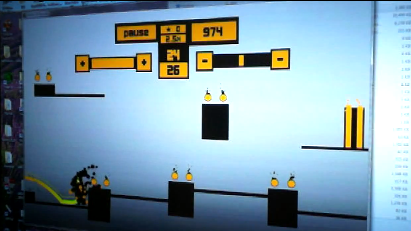 User experience research is a field in design that includes research methods, iterations, insights and maps of experiences. A lot has been done regarding the evaluation of interactive environments, including the analysis of the gameplay experience.
User experience research is a field in design that includes research methods, iterations, insights and maps of experiences. A lot has been done regarding the evaluation of interactive environments, including the analysis of the gameplay experience.
There are a lot of tools that can be used to collect relevant data from users, like physiological methods (Biometrics) and physiological processes. In the case of gameplay experiences, this is not different. The use of integrated methods is each time more common. The challenge is how to be clear and logical.
Studies show that designers don’t want to get the solution from an user research report, they want to know what is the main problem first. In other words, that sounds obvious but, the story that the data tells is more important then finding an answer at first sight. The objective of a report is to show where is the problem.
Biometric Storyboards: visualising meaningful gameplay events from Kiel Gilleade on Vimeo.
There a few ways to tell stories, like data visualisation, texts and storyboards.
Tools like Tableau could help designers to understand the process. However, considering the features of a game, the aspect of the data collected is more linear, as it is related to a level or a journey, combined to the story from the game.
This is why storyboarding could help to tell the story from the player experience. The format and logical process of the data drives us to an insightful evaluation.
A lot of researches have been done regarding the methods of user experience research in games. Biometrics storyboards is a method of user experience research that helps the designer to map the gameplay experience through storyboarding, that combines the designer’s intentions, UX evaluations and physiological player reactions. The combination of iterations, like traditional user test (surveys, interviews), physiological reports and a creation of a game as a control model based on designer’s expertise. The data is arranged according to the time and game events (combats, mechanics, etc).
So, if we consider the analysis of a game level, this is a very interesting approach to help designers to optimize their work, according to the problems highlighted in the reports.
Other formats of collecting data through games show us that the game itself has a lot to bring in terms of information about engagement and feedback. ResearchThroughGaming is a project that does market research using game mechanics, narratives, sound effects and graphics to collect data in an immersive survey. A very interesting approach using games to collect relevant data.
And what the data can teach us about storytelling?
Everything. If we could test the games with people of different backgrounds, including cultures and genres, it could be possible to create a framework of a general gameplay experience. Also it could be possible to include the context and medium of the gameplay design. In which situation is the player? At home? In bed? Playing during the morning? Is he/she playing a game in a mobile phone or console games? Those could be questions to be considered.
At some point, the context seems to be hidden. It could be interesting to establish a way to understand the aspect of gameplay during the day of the player. However, this doesn’t underestimate the value of this research. The evaluation of a positive experience is extremely clear by the Biometrics Storyboarding.
Presentation is everything
It is possible to collect data from different methods, as we know. However the way we present that information is still one part that needs attention. The research is only “over” when it is possible to highlight a problem or an insight. The storyboarding fits the gameplay research because games are systems that have elements like narrative and story. So the format of a storyboarding is totally applicable.
Using this approach it could be possible to measure the aspects of immersion in a game and positive/negative reactions to each event. When game designers create a game, the plan and objective is very clear, however it is not known if the response form the player will be the one as predicted. Also, the use of this approach in game design could bring contributions in designing “behaviour” in the gameplay. It is evident that a lot of publications and tests will still bring us more findings not only in Games User Research, but in all User Experience Research field. So, let the games begin! :)
Read more
Biometric storyboards: visualising game user research data
University of Sussex
Video game storytelling: The real problems and the real solutions
Storyboarding for Games User Research